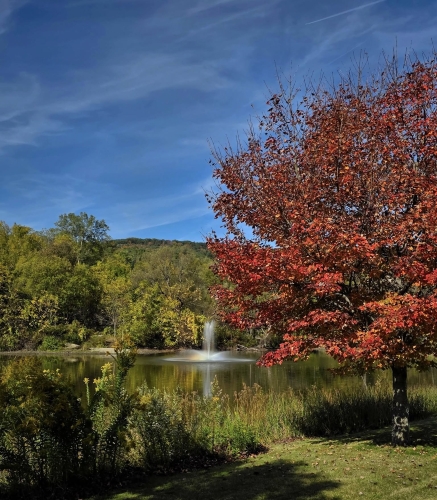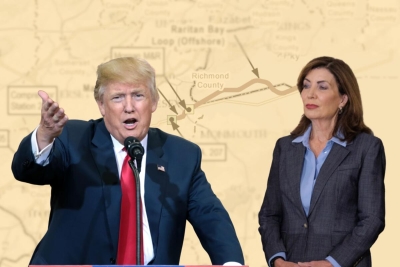Public comments are closing soon for an underwater pipeline project that sprang back to life this spring after talks between Hochul and Trump.
Colin Kinniburgh · August 8, 2025
Next week, New York could move a step closer to approving its biggest gas pipeline in at least a decade. August 16 marks the end of the public comment period for a 37-mile pipeline that would carry gas from New Jersey, underwater, to an existing pipe just south of the Rockaways, adding a new link in a network that spans from Texas to Long Island.
The Northeast Supply Enhancement project, or NESE, could mark a turning point for New York’s approach to energy. For years after passing its flagship climate law in 2019, the state rejected one large fossil fuel project after another, arguing that they would violate the state’s legal mandate to cut greenhouse gas emissions and other environmental protections.
The state Department of Environmental Conservation has previously rejected NESE three times — in 2018, 2019, and 2020 — on the grounds that it would harm water quality in the New York Bay. The pipeline was left for dead.
Then Donald Trump returned to the presidency in January, promising a new age of fossil fuel dominance. NESE’s sudden revival comes after talks between Trump and New York Governor Kathy Hochul in May, when the White House lifted a stop-work order on a major offshore wind project off Long Island while Hochul committed to, in her words, “work with the Administration and private entities on new energy projects.” Just 10 days later, the energy company Williams revealed it was reapplying for approval from New York regulators for NESE and the even larger Constitution Pipeline project.
Hochul has denied that she made any explicit deal with Trump to greenlight new pipelines. But she is practically alone in saying so. The White House told E&E News in May that Hochul “caved” to Trump on allowing two new gas pipelines through New York. The CEO of Equinor, the Norwegian company building the offshore wind farm at the center of the May talks, told the Financial Times in June that the gas-for-wind deal was Hochul’s “angle.”
NESE’s swift progress through New York’s environmental review process has only raised more questions. The DEC quietly issued a notice in early July that it had received a complete application for the project, opening a 30-day comment period with no public hearings; the agency extended the comment period by two weeks after more than 100 groups sent a letter in protest, but did not add any hearings. (DEC’s review of NESE in 2019 included a 45-day comment period and two public hearings.) That means the project could move ahead with less public input than any large wind or solar project, which requires 60 days and at least one hearing.
Asked again in early August about the governor’s agreement with Trump, Hochul’s office maintained that there was no quid pro quo.







